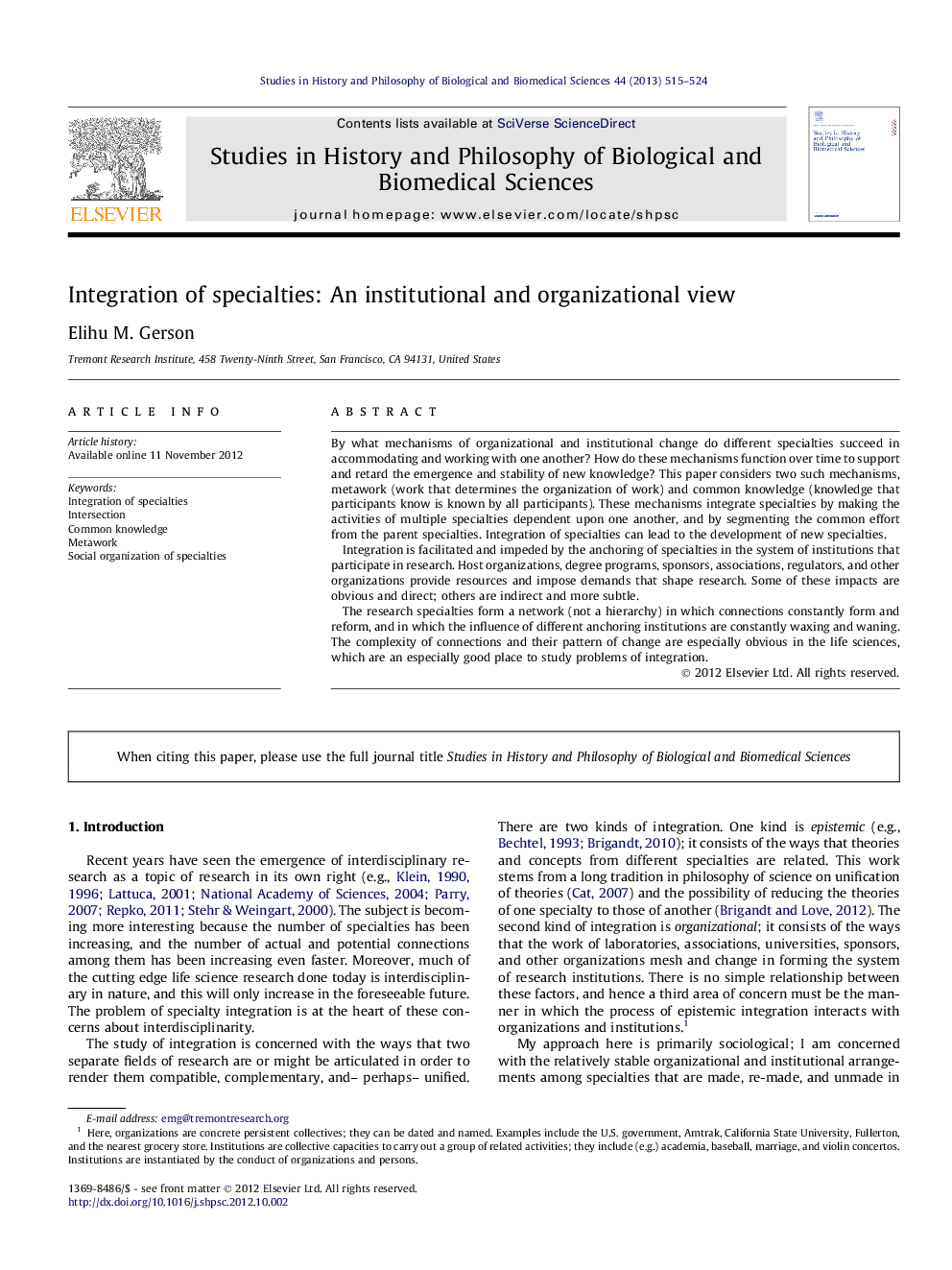| Article ID | Journal | Published Year | Pages | File Type |
|---|---|---|---|---|
| 1161226 | Studies in History and Philosophy of Science Part C: Studies in History and Philosophy of Biological and Biomedical Sciences | 2013 | 10 Pages |
By what mechanisms of organizational and institutional change do different specialties succeed in accommodating and working with one another? How do these mechanisms function over time to support and retard the emergence and stability of new knowledge? This paper considers two such mechanisms, metawork (work that determines the organization of work) and common knowledge (knowledge that participants know is known by all participants). These mechanisms integrate specialties by making the activities of multiple specialties dependent upon one another, and by segmenting the common effort from the parent specialties. Integration of specialties can lead to the development of new specialties.Integration is facilitated and impeded by the anchoring of specialties in the system of institutions that participate in research. Host organizations, degree programs, sponsors, associations, regulators, and other organizations provide resources and impose demands that shape research. Some of these impacts are obvious and direct; others are indirect and more subtle.The research specialties form a network (not a hierarchy) in which connections constantly form and reform, and in which the influence of different anchoring institutions are constantly waxing and waning. The complexity of connections and their pattern of change are especially obvious in the life sciences, which are an especially good place to study problems of integration.
